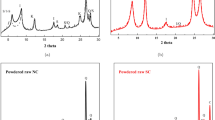Abstract
The physico-chemical changes in clay soils due to the application of electrokinetics are difficult to predict with accuracy because of the very wide range of parameters interacting. The effects of the application of an electrical gradient across controlled specimens of a pure form of kaolinite using stainless steel electrodes and a deionised water feed to the electrodes, to mimic electrokinetic stabilisation without the stabiliser added, are reported. The specimens in which electrical and chemical changes were induced over different time periods (3, 7, 14 and 28 days) were subsequently tested for Atterberg limits, undrained shear strength, water content, pH, conductivity, Fe concentration and zeta potential. Changes in strength and plasticity indices were attributed to electrolysis, electro-osmosis, electrode degradation, clay mineral dissolution, ion movement due to electromigration, cation exchange reactions and precipitation of reaction products.















Similar content being viewed by others
References
Casagrande L (1949) Géotechnique 1(3):159–177
Mohamedelhassan E, Shang JQ (2002) Ground Improv 5:1–8
Jones CJFP, Glendinning S, Shim GSC (2002) Soil consolidation using electrically conductive geosynthetics. In: 7th International conference on geosynthetics, Nice, France
Alshawabkeh AN, Sheahan TC (2002) In: Transportation Research Record No 1787, TRB, National Research Council, Washington, DC, 53–60
Ozkan S, Gale RJ, Seals RK (1999) Ground Improv 3:135–144
Hamed JT, Bhadra A (1997) J Hazard Mater 55:279–294
Vane LM, Zang GM (1997) J Hazard Mater 55:1–22
Alshawabkeh AN, Acar YB (1992) J Env Sci Health Part A 27(7):1835–1861
Liaki C, Rogers CDF, Boardman DI (2008) J Env Sci Health Part A 43(8):810–822
Gray DH (1970) Géotechnique 20(1):81–93
Mitchell JK (1993) Fundamentals of soil behavior, 2nd edn. Wiley, New York
Casagrande L (1983) J Boston Soc Civ Eng 69(2)255–302
Mitchell JK (1991) Géotechnique 41(3):299–340
Shang JQ, Dunlap WA (1996) J Geotech Eng 122(4):274–280
Yeung AT (2006) Env Eng Sci 23(1):202–224
British Standards Institution (1990) Methods of test for soils for civil engineering purposes: BS1377. HMSO, London, UK
Liaki C (2006) Physicochemical study of electrokinetically treated clay using carbon and steel electrodes. PhD Thesis, University of Birmingham, UK
Rogers CDF, Liaki C, Boardman DI (2003) Advances in the engineering of lime stabilised clay soils. CD-ROM. Keynote Paper, International conference on problematic soils, Nottingham, UK
Boardman DI, Glendinning S, Rogers CDF (2001) Géotechnique 51(6):533–543
Boardman DI, Glendinning S, Rogers CDF (2004) Géotechnique 54(7):467–486
Loughnan FC (1969) Chemical weathering of silicate minerals. American Elsevier Publishing Co. Inc, New York
Boardman DI (1999) Lime stabilisation: clay–metal–lime interactions. PhD Thesis, Loughborough University, UK
Acknowledgements
This research project was funded jointly by the Engineering and Physical Sciences Research Council and University of Birmingham via a Post-Graduate Teaching Assistant studentship, this support being gratefully acknowledged. The research and technical staff of the School of Civil Engineering are thanked for their assistance.
Author information
Authors and Affiliations
Corresponding author
Rights and permissions
About this article
Cite this article
Liaki, C., Rogers, C.D.F. & Boardman, D.I. Physico-chemical effects on clay due to electromigration using stainless steel electrodes. J Appl Electrochem 40, 1225–1237 (2010). https://doi.org/10.1007/s10800-010-0096-8
Received:
Accepted:
Published:
Issue Date:
DOI: https://doi.org/10.1007/s10800-010-0096-8




